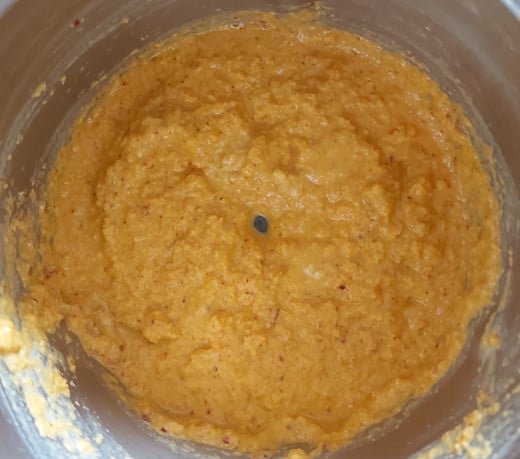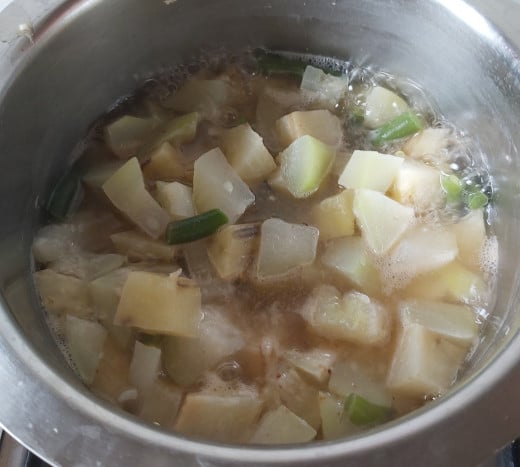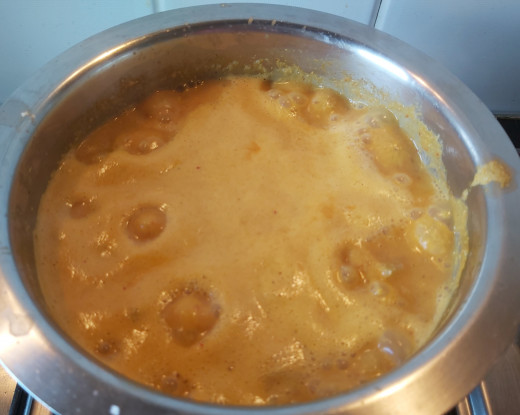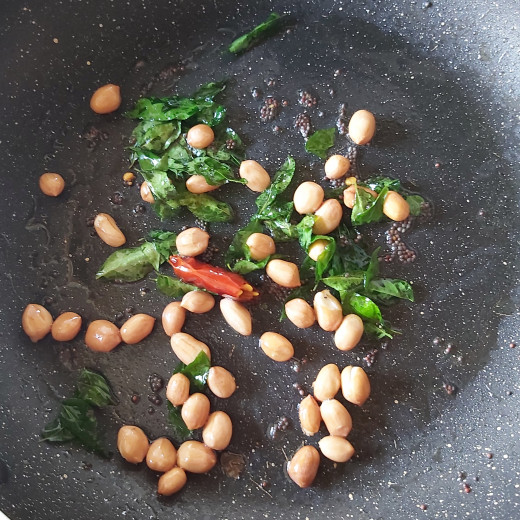Mixed Vegetable Sambar Recipe
Mixed Vegetable Sambar
Sambar is one of the popular, very common, loved by many and everyday dish in South India. But because of it's benefits and taste, popular all over the India. Rice served with sambar makes complete meal as it is protein packed and nutrient dense. The simplicity and wholesomeness made this sambar famous among the food lovers.
This sambar is prepared using coconut and spices which are roasted and ground to form sambar masala paste. This dish is very rich in protein, vitamins, minerals as it have plenty of vegetables.
This sambar is open ended recipe with respect to adding vegetables. You can add or delete any vegetables of your choice.
The home ground coconut paste used here gives the best and perfect taste in sambar. Goes best with hot steamed rice. Can even serve with dosas.

Cook Time
Ingredients
- Raw banana 1/2 cup, washed, peeled and chopped
- radish 1/4 cup, washed, peeled and chopped
- ash gourd 1/4 cup, washed, peeled and chopped
- french beans 1/2 cup, washed, chop off ends and chopped
- bottle gourd 1/4 cup, washed, peeled and chopped
- salt to taste
- water 2- 2.5 cups, or as required
- 2-3 teaspoons tamarind pulp
- 1/2 cup fresh coconut, grated
- 1-2 ripe tomatoes, washed and roughly chopped
- 3-4 teaspoons cooking oil, to fry spices and for seasoning
- 2 teaspoons urad dal
- 2 teaspoons coriander seeds
- 1 teaspoon cumin seeds
- 3/4 teaspoon poppy seeds
- 1-2 green chilies
- 3-4 byadagi red chilies, or less spicy red chilies to give color
- 1/2 teaspoon turmeric powder
- 1/2 teaspoon mustard seeds
- 1-2 broken red chilies, for seasoning
- 1-2 teaspoons peanuts
- 1-2 strings fresh curry leaves
How to make mixed vegetable sambar
- Soak 2-3 teaspoons of tamarind pulp in water for 10-15 minutes. Once the tamarind is soft, squeeze the tamarind juice, discard the fiber. Keep tamarind juice aside till further use.
- Wash, peel and chop vegetables. Take them in a pot or vessel. Add 1-1.5 cups of water to cook vegetables (or enough water to cover the vegetables). Add salt as per taste. Stir, switch on the flame and cook vegetables in medium flame (you can add fast cooking vegetables first followed by slow cooking vegetables). Check in between if vegetables are cooked. Do not overcook the vegetables.
- When vegetables are cooking, chop 1-2 medium sized ripe tomatoes and grate 1/2 cup of fresh coconut. Keep aside.
- In a frying pan heat 1-2 teaspoons of cooking oil, add 2 teaspoons of urad dal, 2 teaspoons of coriander seeds, 1 teaspoon cumin seeds, 3/4 teaspoon of poppy seeds, 1-2 green chilies and 3-4 byadagi red chilies (or any less spicy red chilies to give color to the sambar). Fry in low flame till cumin seeds starts to splutter, red chilies turns crisp and spices starts smelling nice.
- Add chopped tomatoes, grated coconut and 1/2 teaspoon of turmeric powder. Mix and fry in low flame for 2-3 minutes. Switch off the flame and let it cool down completely.
- After cooling down, transfer these mixture to the mixer jar, add 1/4 cup of water or as required, and grind them to fine paste.
- When vegetables are almost cooked, add prepared tamarind juice. Stir and cook till raw smell of tamarind goes away.
- Add ground coconut - spice paste, stir, mix and cook for 3-4 minutes in medium flame. Adjust salt, add water if the consistency looks very thick. Roll boil in low flame for 2-3 minutes and switch off the flame.
- In a frying pan, heat 1-2 teaspoons of oil, add 1/2 teaspoon of mustard seeds, let it splutter, add 1-2 broken red chilies, 1-2 teaspoons of peanuts, 1-2 strings of fresh curry leaves. Fry till peanuts turns golden brown. Pour this seasoning immediately into the sambar.
- Serve hot with hot steamed rice and enjoy.
Preparation of mixed vegetable sambar with step by step photos

















Notes
- This sambar can be prepared with mixture of vegetables like yellow pumpkin, carrot, drumstick, potatoes, eggplant, snake gourd, Mangalore cucumber and so on. Depending on the type of vegetables used, the taste and flavor of this sambar vary slightly but the procedure remains the same. Use the vegetables which you think will suit your taste buds.
- You can add shallots to enhance the flavor of sambar.
- You can vary the consistency of sambar as per your liking.
- Vegetables should be cooked properly, but it should be whole. They should not break or mush in the sambar. So, if you are using the mixture of vegetables, first add vegetables which cooks slower followed by vegetables which cook faster.
- You can chop vegetables in smaller pieces to make them cook faster.
- You can use ghee instead of oil for tempering.
- You can add chopped fresh coriander leaves which is optional.
| Nutrition Facts | |
|---|---|
| Serving size: 1 | |
| Calories | 270 |
| Calories from Fat | 90 |
| % Daily Value * | |
| Fat 10 g | 15% |
| Saturated fat 2 g | 10% |
| Carbohydrates 40 g | 13% |
| Sugar 10 g | |
| Fiber 15 g | 60% |
| Protein 13 g | 26% |
| Cholesterol 5 mg | 2% |
| Sodium 63 mg | 3% |
| * The Percent Daily Values are based on a 2,000 calorie diet, so your values may change depending on your calorie needs. The values here may not be 100% accurate because the recipes have not been professionally evaluated nor have they been evaluated by the U.S. FDA. | |








